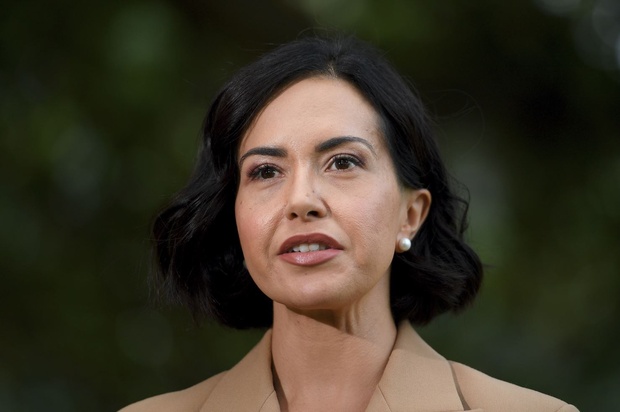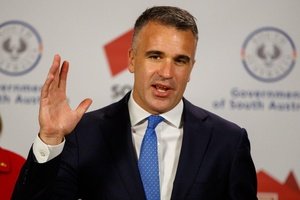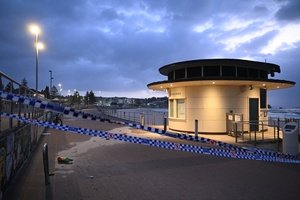NSW Education Department figures quoted in the Sydney Morning Herald (SMH) show 175 high schools are struggling to find English and mathematics teachers.
As a consequence, the Department has sent an SOS to educators who have retired or resigned, in a desperate bid to entice them back before the 2024 school year begins.
Acting NSWTF president, Henry Rajendra, said the widespread vacancies showed the need for more action from the State Government.
“The full scale of the teacher shortage has been laid bare, with the state suffering from the corrosive consequences of the Coalition’s wage cap,” he said in a statement.
“Addressing the teacher shortage must be the highest priority of the Minns Government in order to give our students the best public education they deserve.”
More than 500 head teacher and assistant principal roles remain vacant statewide, and teacher shortages are most acute in Sydney’s south-west, Parramatta and Blacktown, where about 65 per cent of schools reported a vacancy in Term 4 last year.
“The Government cannot ignore the fundamental factors that have contributed to the teacher shortages,” Rajendra said.
“Work must continue to ensure teacher salaries are competitive and unmanageable workloads and insecure employment are addressed.
“This includes the urgent need for the premier to deliver on his election promise to cut teachers’ admin hours.”
An education department spokesperson outlined to the SMH the Teachers Re-engage program, which they said is “a new initiative to reconnect with our valued former employees who retired or resigned between 2019 and 2021 to see if they would be interested in re-entering the school teaching workforce, particularly on a casual or temporary basis”.
The spokesperson also said initiatives to attract and retain more teachers at present include making thousands of temporary teachers permanent, a $20 million Innovative Teacher Training Fund to develop new teacher training methods and expanding flexible pathways for career-changers.
Teachers in the state are also being offered bonus payments of up to $28,000 for some positions in rural and regional schools.
Reports on the seriousness of the educator shortage in the state have coincided with new research by the e61 Institute, highlighting the uneven distribution of high-aptitude teachers within NSW secondary schools, and how they are less likely to work in disadvantaged areas, creating a concerning imbalance in educational resources across the state.
“Higher-aptitude teachers tend to work in more affluent areas with higher students’ performance, while lower-aptitude teachers tend to work in more disadvantaged areas with lower students’ performance,” e61 Institute research manager Dr Silvia Griselda said.
“This is crucial because a more even distribution of high-aptitude teachers could help reduce educational and social inequities by providing more equal access to learning opportunities."

New research by the e61 Institute has highlighted the uneven distribution of high-aptitude teachers within NSW secondary schools, and how they are less likely to work in disadvantaged areas, possibly perpetuating educational inequality.
The e61 Institute research used teachers’ prior academic achievement – specifically their ATAR scores – as a measure of their academic aptitude.
While far from the sole determinant, previous research has found that academic aptitude is one of the most consistent predictors of a teacher’s ability to improve the academic performance of their students, especially in secondary schools.
Combining this measure of aptitude with information on teachers’ place of work and students’ NAPLAN performance, the e61 research found a strong positive correlation between the academic aptitude of teachers in a geographical area and the performance of students.
This could partly reflect the role of high-aptitude teachers in improving student performance.
e61 Institute CEO Michael Brennan said policymakers should see reducing regional disparities in teacher quality as an important part of providing all children with equal access to educational opportunities.
“More research is needed to determine how we can encourage more high-aptitude teachers to work in disadvantaged areas, and whether additional support is required to support the development of teachers in these areas,” he said.
“But what is clear is that to achieve a more efficient and equitable education system, we almost certainly need a more efficient and equitable distribution of high-aptitude teachers.”
Department data from Term 4 last year, meanwhile, shows disadvantaged schools had more than double the number of vacancies than more advantaged schools.
Schools with an ICSEA score under 1000 reported 1381 full-time equivalent vacancies, while more advantaged schools had 590 vacancies.
It is not only public schools that are struggling with staffing shortages, private and Catholic schools across Sydney are reporting that they are dealing with teacher vacancies across multiple subjects.
NSW Education Minister Prue Car told the SMH the Minns Government was taking a “multipronged approach to ensure we retain the wonderful teachers we have, recruit new teachers and encourage those who left the profession to return”.
“This includes the profession’s largest wage increase in 30 years, converting 16,000 teachers and support staff on temporary contracts to permanent, and slashing the administrative burden,” she said.
Rajendra said it was clear that the previous Perrottet Government failed to address uncompetitive salaries, unmanageable workloads, a lack of employment security and unreasonable admin hours and remains responsible for the teacher shortages across NSW public schools.
“It is now up to the Minns Government to focus on the work necessary to restore the attractiveness of the profession,” he said.
“NSW public schools must also be fully funded to 100 per cent of the Schooling Resource Standard (SRS), which is the minimum level agreed to as necessary for meeting student needs over a decade ago.
“The Albanese government needs to ensure it doesn’t fall short of providing this crucial funding to NSW.”














